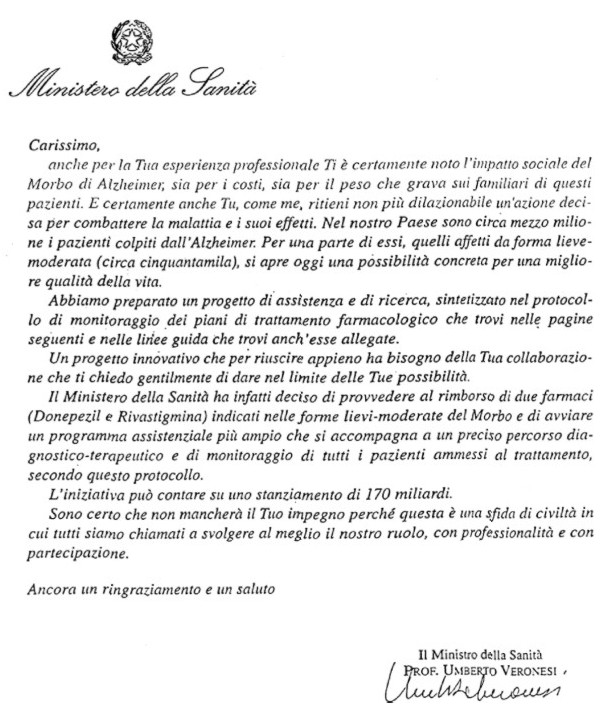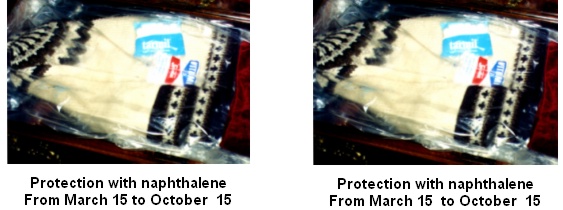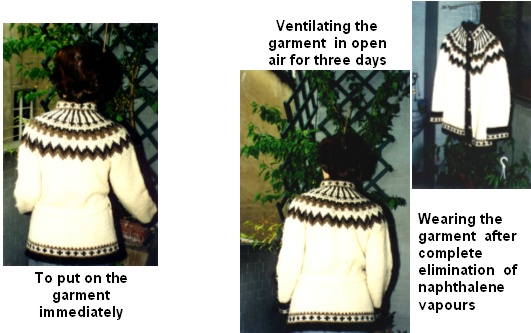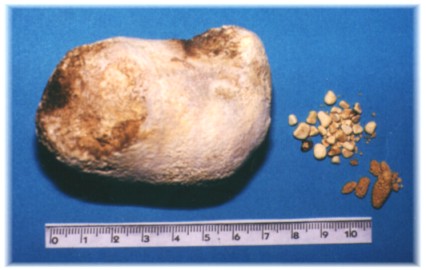|
 |
 |
|
Gruppo di
Ricerca
per la Prevenzione
della
Patologia
Ambientale |
|
Research Group for
the Prevention
of Environmental
Disease | |
|
|
 |
|
Italiano |
|
DYNAMICS
OF ENVIRONMENTAL DISEASE THROUGHOUT MAN'S LIFESPAN |
|
|
|
|
CD-10 |
CONCLUSION: WHAT NOT TO DO OR
HOW TO DO IT BETTER
FOR THE SAKE OF THE ENVIRONMENT AND HEALTH
|
|
CONTENT |
|
|
|
|
01 |
MITES AND OTHER PARASITES PRESENT IN THE ENVIRONMENT |
|
|
|
|
02
|
FORMALDEHYDE |
|
|
|
|
03 |
RADON-EMITTING WALLS |
|
|
|
|
04 |
ELECTROMAGNETIC FIELDS Telecommunication boosters |
|
|
|
|
05 |
ELECTROMAGNETIC FIELDS - Overhead electricity cables and houses |
|
|
|
|
06 |
ELECTROMAGNETIC FIELDS Mobile phones and electrical appliances |
|
|
|
|
07 |
HALOGEN COMPOUNDS: CCL4,
trichloroethylene
and VCM |
|
|
|
|
08 |
PROPELLENTS (CFCs) FOR COSMETICS (Shaving foams, deodorants,
hair lacquers) |
|
|
|
|
09 |
PROPELLENTS (CFCs) FOR PESTICIDES AND PAINT SPRAY CANS |
|
|
|
|
10 |
GAS FOR REFRIGERATION Freon lost from refrigerators |
|
|
|
11 |
TRICHLOROETHYLENE
Dry cleaning clothes |
|
|
|
|
12 |
NAPHTHALENE
Protecting woollen clothes with mothballs |
|
|
|
|
13 |
BENZENE IN UNLEADED FUEL AND POTENTIATION |
|
|
|
|
14 |
HALOGEN COMPOUNDS IN FIRE EXTINGUISHERS: CCL4,
HALON, POWDERS |
|
|
|
|
15 |
MONOSODIUM GLUTAMATE |
|
|
|
16 |
CADMIUM IN FOOD AND IN TOBACCO SMOKE |
|
|
|
|
17 |
ALUMINIUM
Packaged food sold in aluminium foil |
|
|
|
|
18 |
ALUMINIUM Food contained in aluminium trays |
|
|
|
|
19 |
ALUMINIUM Food cooked in aluminium pots and pans |
|
|
|
|
20 |
ALUMINIUM
Anti-ulcer drugs (Maalox) |
|
|
|
|
21 |
ALUMINIUM Tap water cleared with aluminium polychoride
(Veronesi) |
|
|
|
|
22 |
LEAD Lead glazing on earthenware pots |
|
|
|
|
23 |
LEAD Lead glazing on earthenware pots and pans |
|
|
|
|
24 |
LEAD Lead glazing on china cups |
|
|
|
|
25 |
LEAD Lead glazing on decorated earthenware |
|
|
|
|
26 |
LEAD - Medicinal calcium from ground seashells |
|
|
|
|
27 |
LEAD Lead toys (soldiers) |
|
|
|
|
28 |
LEAD Lead toys (model arms) |
|
|
|
|
29 |
LEAD Consuming food in outdoor restaurants on streets with
heavy vehicle traffic |
|
|
|
|
30 |
LEAD Jogging in urban streets with heavy vehicle traffic |
|
|
|
31 |
LEAD Cleaning external walls by sanding using lead-containing
sands
|
|
|
|
|
32 |
LEAD
Collecting fallen leaves by blowing with dispersion into the
air also of asbestos, particulate, silica and DPPD |
|
|
|
|
33 |
MERCURY Sea fish (Minamata) |
|
|
|
|
34 |
MERCURY Contaminated meat (Ratcliffe) |
|
|
|
|
35 |
MERCURY Inhalation of mercury vapours from broken thermometers |
|
|
|
|
36 |
MERCURY Inhalation of polluted dust (Bertini) |
|
|
|
|
37 |
MERCURY - Silver amalgam dental fillings
|
|
|
|
|
38 |
SILICA Ajax
sniffing |
|
|
|
|
39 |
CADMIUM Contaminated foodstuffs of plant origin |
|
|
|
|
40 |
CANCEROGENS AND CADMIUM Tobacco smoke, active and passive |
|
|
|
|
41 |
BENZENE Houses located near unleaded petrol pumps |
|
|
|
|
42 |
BLOCKED DRAINS With puddles after heavy rain |
|
|
|
|
43 |
ALCOHOL Heavy consumption of alcoholic drinks or spirits |
|
|
|
|
44 |
PESTICIDES Not respecting application regulations, and use of
surface-active agents |
|
|
|
|
45 |
MINERAL WATERS AND TAP WATER, WHAT ARE WE DRINKING TODAY IN
EUROPE? |
|
|
|
|
|
|
|
AN
ITALIAN EXAMPLE (HEALTH MINISTRY)
ABOUT WHAT NOT TO DO AND HOW TO DO IT BETTER
|
|
 |
| |
| |
| |
|
RELATIONSHIP
BETWEEN ALUMINIUM AND HUMAN ORGANS AND FUNCTIONS
ACCORDING
TO THE QUOTED SCIENTIFIC LITERATURE |
|
|
|
Carriers |
|
A: |
dusts (Vandenplas O., et al.,
1996) |
|
B: |
foods (Maitani T., et al.,
1996) |
|
C: |
dialysis in nephropatic patients (Van Landeghem G.F., et
al., 1998) |
|
|
Exposures |
|
A: |
dust inhalation (Vandenplas O., et al., 1996) |
|
B: |
ingestion of contaminated foods
(Maitani T., et al., 1996) |
|
C: |
saline solutions containing
aluminium (Van Landeghem G.F., et al., 1998) |
|
|
Biological
Targets
|
|
A: |
breathing apparatus (Newman L.S., 1998)
|
|
B: |
liver (Maitani T., et al., 1996) |
|
C: |
bone and skeleton (Popinska K., et al., 1999) |
|
D: |
kidney (Tzanno Martins C., et al., 1996) |
|
E: |
central nervous system (Nayak P.,
Chatterjee A. K. 1999) |
|
F: |
reproductive apparatus (Bataineh H., et al., 1998) |
|
G: |
mitochondria of parenchimatous cells (Gandolfi L., et al.,
1998; Trombley P.Q. 1998) |
|
H: |
aminolevulinic acid-dehydrogenase (Schetinger M.R.C., et
al., 1999) |
|
I: |
embryo (Calevro F., et al., 1998) |
|
|
Pathologies |
|
A: |
asthmatic reactions (Vandenplas O., et al., 1996) |
|
B: |
liver toxicity and cholestasis (Maitani T., et al.,
1996; Popinska K., et al., 1999) |
|
C: |
retarded calcification and
retarded growth (Belles M., et al., 1998; Popinska K.,
et al., 1999) |
|
D: |
kidney failure (Tzanno Martins C., et al., 1996) |
|
E: |
encephalopathies, Alzheimers disease and neuron damage (Nayak
P., Chatterjee A.K. 1999; Suarez Fernandez M.B., et al.,
1999; Anghileri L.J., Thouvenot P., 1999) |
|
F: |
reduced fertility, sexual behaviour disturbance (Bataineh
H., et al., 1998) |
|
G: |
altered Ca 2+
homeostasis and GABA regulation (Gandolfi L., et al
1998; Trombley P.Q. 1998)** |
|
H: |
anaemia
(Schetinger M.R.C., et al 1999) |
|
I: |
myopathy (Kes P., Pasini J.
1998) |
|
J: |
retarded differentiation of the
embryos central nervous system and of skeleton (Calevro F.,
et al 1998) |
| |
| |
|
ALZHEIMER'S
DISEASE |
|
according to V.
Fattorusso e O. Ritter,
VADEMECUM CLINICO
Masson, May 1987
Synonyms: presenile dementia, diffuse cerebral atrophy
Definition:
precocious form of senile dementia, characterised clinically by a
rapid mental decline and, anatomically, by diffuse celebral atrophy
with widespread senile plaques.
Pathological anatomy
1.
Alzheimer's
disease:
neurofibrillary degeneration, neuron atrophy, astrocyte
profileration. In the advanced stage, circonvolutional cerebral
atrophy and dilated ventricles. Cholinergic deficit of certain
sub-cortical neurons.
2.
Pick's
disease:
same lesions, but limited to the frontal and temporal lobes;
furthermore, argirophile inclusions in the nerve cells.
Symptoms:
insidious
onset, between the ages of 40 and 60, sometimes even earlier, with
rapidly progressive problems of memory with confabulation, language
impairments (paraphasia, apraxia, problems of judgement and
reasoning. In early stages the patient is conscious of his/her
problems, to be followed by the irreversible evolution towards
complete dementia. Sometimes epileptic fits and muscular hypertonia.
In Pick's disease sometimes a frontal syndrome is observed.
Differential diagnosis:
that
of the amnesia.
CAT: the
image may be normal, as the atrophy is often only microscopic.
Therapy: symptomatic. |
| |
PREVENTION
OF
NEUROPATHY
FROM
ALUMINIUM
|
|
|
|
ADVICES |
|
|
NO |
to the use of
aluminium pots and pans. |
|
|
|
|
NO |
to
the use of aluminium foil for wrapping food. |
|
|
|
|
NO |
to the use of aluminium polychloride for
accelerating the coagulation of impurities in drinking water
production with water purified by inverse osmosis. |
|
|
|
|
NO |
to the use of
glass containing saline solutions used for kidney dialysis
patients. |
|
|
|
|
NO |
to the use of
Maalox (which contains 3.5% aluminium hydroxide) as an antacid
drug for patients suffering from a gastric ulcer. |
|
|
|
IN
THIS WAY THE MORAL AND FINANCIAL COSTS OF
ALZHEIMER'S DISEASE COULD BE REDUCED |
|
|
|
|
|
|
|
Protecting woollen garments by means of a moth-killer |
|
|
|
WHAT NOT TO DO |
HOW TO DO IT BETTER |
| |
|
|
 |
|
|
 |
|
|
|
|
|
|
 |
|
|
URINARY TRACT STONES
|
|
|
|
WATER MAKES UP 70% OF
OUR BODIES:
WHAT ARE WE DRINKING
IN EUROPE TODAY? |
|
|
|
The
report summarises the commonest risks of disease for man in his
everyday environment, excluding occupational disease. Occupational
disease has been excluded because, due to the particular forms of
exposure,
it has already been thoroughly observed and dealt with, including
prevention. The
disease-causing agents which affect man inside or outside the home,
frequently are the same as those that attack him while he performs
his normal working activity. Here we have stressed non-occupational
risks because they are generally not known as such for a lack of
awareness, which may be active or passive according to the
circumstances.
First
of all, maximum attention has been given to 1) the synergism between
many harmful pathogens, linked to the co-presence of various
damaging agents and to 2) the toxicological potentiation which
depends on a possible enzymatic induction of cells responsible for
the metabolism of xenobiotics which can become real poisons. Such
knowledge allows the physician to make the correct aetiological
diagnosis as soon as the exposed patient has passed the clinical
horizon and, with the realms of possibility, of taking action to
stop exposure to the risk before the patient passes the point of
no return, namely the irreversibility of the damage.
In the
descriptive part we have then examined the main pollutants in
everyday life , both within and outside the home.
The
review of risks does not claim to be complete and exhaustive but at
least it offers the ordinary citizen a panorama of possible harm
caused by environmental pollutants. First of all, two risk agents
found within the home are mentioned: certain parasites, such as
mites, which can bring on allergy, and formaldehyde, a very common
chemical substance in places where plastified wood is found. Within
and outside the home, humans are daily exposed to electromagnetic
waves, which may be generated inside or outside the house.
Particular importance is given to the fact that these potentially
harmful agents may act in synergism with other harmful agents, while
it is unlikely that alone they might reach levels that could cause
severe harm. Then we speak of CFCs often used as propellants in
household sprays or in fire extinguishers. We then move on to heavy
metals, where we mention the harmful effect of aluminium which
enters the body by different mechanisms, food or otherwise.
Furthermore, mention has been made of how certain habits can expose
the human body to lead, generally surreptitiously . Among the other
heavy metals we have reported on the occasions in which, as
demonstrated in scientific literature, the human being may incur
serious disease when exposed to cadmium or mercury. Finally we have
considered the possibility that tobacco smoke and the intake of
alcohol can set off a synergism or potentiation of common signs of
environmental disease.
The
work concludes highlighting the risk that episodes of serious and
widespread pollution, albeit not caused by war, but by man-made
disasters both on land and at sea, can affect the present population
on a global scale. This situation may be compared to the disasters
which affected the ancient Greeks and Romans, evidence of which can
be found today in the data that show lead pollution in the glaciers
of Greenland.
Regarding the controversy of whether it is better to consume
commercially bottled mineral water or tap water, we can say that we
simply drink everything. Our daily water intake depends on our
metabolic needs, environmental temperature and humidity as well as
physical activity and what we need is H2O. However, what
we actually drink is this natural compound served with a host of
compound substances, which can do without. Unawareness of the
content of natural water, or that supplied by the municipal
waterworks, or that bottled and carbonated and sold commercially,
sometimes exposes us to the risk of drinking a not entirely harmless
water. In fact, it cannot be excluded that both tap water and
bottled water have their surprises in store. Generally speaking,
mineral waters are bacteriologically pure as they should be but
sometimes they have a very high declared fixed residue which makes
them more tasty but which presents a concrete risk of the formation
of stones in the urinary tract. Such formation should be avoided
although today the stones can be pulverised by lithotripsy. On the
other hand, a glass of tap water could mean the intake into the body
of harmful heavy metals which are used in clearing and/or
sterilising the water in the potabilisation process. And this all
occurs, despite what we read or hear in the media, or the hype we
read on the labels of bottles of mineral water, all which is always
diuretic, or, as far as tap water is concerned, how it is guaranteed
with special panels of tasters. |
|